
608 posts
Our Galaxy Is Caught Up In A Giant Cosmic Cobweb!
Our Galaxy is Caught Up in a Giant Cosmic Cobweb! 🕸️

If we could zoom waaaay out, we would see that galaxies and galaxy clusters make up large, fuzzy threads, like the strands of a giant cobweb. But we'll work our way out to that. First let's start at home and look at our planet's different cosmic communities.
Our home star system
Earth is one of eight planets — Mercury, Venus, Earth, Mars, Jupiter, Saturn, Uranus, and Neptune — that orbit the Sun. But our solar system is more than just planets; it also has a lot of smaller objects.
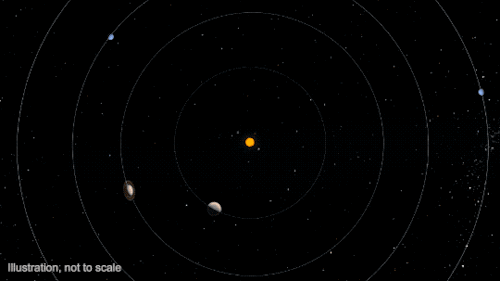
An asteroid belt circles the Sun between Mars and Jupiter. Beyond Neptune is a doughnut-shaped region of icy objects called the Kuiper Belt. This is where dwarf planets like Pluto and Makemake are found and is likely the source of short-period comets (like Haley’s comet), which orbit the Sun in less than 200 years.
Scientists think that even farther out lies the Oort Cloud, also a likely source of comets. This most distant region of our solar system is a giant spherical shell storing additional icy space debris the size of mountains, or larger! The outer edge of the Oort Cloud extends to about 1.5 light-years from the Sun — that’s the distance light travels in a year and a half (over 9 trillion miles).

Sometimes asteroids or comets get ejected from these regions and end up sharing an orbit with planets like Jupiter or even crossing Earth’s orbit. There are even interstellar objects that have entered the inner solar system from even farther than the Oort Cloud, perhaps coming all the way from another star!
Our home galaxy
Let's zoom out to look at the whole Milky Way galaxy, which contains more than 100 billion stars. Many are found in the galaxy’s disk — the pancake-shaped part of a spiral galaxy where the spiral arms lie. The brightest and most massive stars are found in the spiral arms, close to their birth places. Dimmer, less massive stars can be found sprinkled throughout the disk. Also found throughout the spiral arms are dense clouds of gas and dust called nebulae. The Sun lies in a small spiral arm called the Orion Spur.

The Milky Way’s disk is embedded in a spherical “halo” about 120,000 light-years across. The halo is dotted with globular clusters of old stars and filled with dark matter. Dark matter doesn’t emit enough light for us to directly detect it, but we know it’s there because without its mass our galaxy doesn’t have enough gravity to hold together!
Our galaxy also has several orbiting companion galaxies ranging from about 25,000 to 1.4 million light-years away. The best known of these are the Large and Small Magellanic Clouds, which are visible to the unaided eye from Earth’s Southern Hemisphere.
Our galactic neighborhood

The Milky Way and Andromeda, our nearest neighboring spiral galaxy, are just two members of a small group of galaxies called the Local Group. They and the other members of the group, 50 to 80 smaller galaxies, spread across about 10 million light-years.
The Local Group lies at the outskirts of an even larger structure. It is just one of at least 100 groups and clusters of galaxies that make up the Virgo Supercluster. This cluster of clusters spans about 110 million light-years!

Galaxies aren’t the only thing found in a galaxy cluster, though. We also find hot gas, as shown above in the bright X-ray light (in pink) that surrounds the galaxies (in optical light) of cluster Abell 1413, which is a picturesque member of a different supercluster. Plus, there is dark matter throughout the cluster that is only detectable through its gravitational interactions with other objects.
The Cosmic Web
The Virgo Supercluster is just one of many, many other groups of galaxies. But the universe’s structure is more than just galaxies, clusters, and the stuff contained within them.

For more than two decades, astronomers have been mapping out the locations of galaxies, revealing a filamentary, web-like structure. This large-scale backbone of the cosmos consists of dark matter laced with gas. Galaxies and clusters form along this structure, and there are large voids in between.
The scientific visualizations of this “cosmic web” look a little like a spider web, but that would be one colossal spider! <shudder>

And there you have the different communities that define Earth’s place in the universe. Our tiny planet is a small speck on a crumb of that giant cosmic web!
Want to learn even more about the structures in the universe? Check out our Cosmic Distance Scale!
Make sure to follow us on Tumblr for your regular dose of space.
-
 thegirlsinthecity liked this · 1 year ago
thegirlsinthecity liked this · 1 year ago -
 call-me-schmidt reblogged this · 1 year ago
call-me-schmidt reblogged this · 1 year ago -
 renatocarvalho liked this · 1 year ago
renatocarvalho liked this · 1 year ago -
 electriccowboydreamer liked this · 1 year ago
electriccowboydreamer liked this · 1 year ago -
 grouchomarx86 liked this · 1 year ago
grouchomarx86 liked this · 1 year ago -
 herhideoutturtle liked this · 1 year ago
herhideoutturtle liked this · 1 year ago -
 nekomansir liked this · 1 year ago
nekomansir liked this · 1 year ago -
 spooooooooooooooooky liked this · 1 year ago
spooooooooooooooooky liked this · 1 year ago -
 thesaltoforion reblogged this · 1 year ago
thesaltoforion reblogged this · 1 year ago -
 blogquantumreality liked this · 1 year ago
blogquantumreality liked this · 1 year ago -
 thegirlsinthecity reblogged this · 1 year ago
thegirlsinthecity reblogged this · 1 year ago -
 bigolbreakfast liked this · 2 years ago
bigolbreakfast liked this · 2 years ago -
 illumidari liked this · 2 years ago
illumidari liked this · 2 years ago -
 unabashedmoonhideout6969 liked this · 2 years ago
unabashedmoonhideout6969 liked this · 2 years ago -
 zephiris liked this · 2 years ago
zephiris liked this · 2 years ago -
 zemant-blog reblogged this · 2 years ago
zemant-blog reblogged this · 2 years ago -
 super--boo-kworm liked this · 2 years ago
super--boo-kworm liked this · 2 years ago -
 pgnsss liked this · 2 years ago
pgnsss liked this · 2 years ago -
 wanderinginthecosmos liked this · 2 years ago
wanderinginthecosmos liked this · 2 years ago -
 midnightbikeride liked this · 2 years ago
midnightbikeride liked this · 2 years ago -
 bohobearsboutique liked this · 2 years ago
bohobearsboutique liked this · 2 years ago -
 smileydork liked this · 2 years ago
smileydork liked this · 2 years ago -
 gidkog liked this · 2 years ago
gidkog liked this · 2 years ago -
 banavalope liked this · 2 years ago
banavalope liked this · 2 years ago -
 jiminyminyminyminy liked this · 2 years ago
jiminyminyminyminy liked this · 2 years ago -
 couldusesomeassist liked this · 2 years ago
couldusesomeassist liked this · 2 years ago -
 jackassjamboree liked this · 2 years ago
jackassjamboree liked this · 2 years ago -
 gilliansboobs liked this · 2 years ago
gilliansboobs liked this · 2 years ago -
 officialbotanicalinterest liked this · 2 years ago
officialbotanicalinterest liked this · 2 years ago -
 dcjr21 liked this · 2 years ago
dcjr21 liked this · 2 years ago -
 peachy0613 liked this · 2 years ago
peachy0613 liked this · 2 years ago -
 modelmisbehavour reblogged this · 2 years ago
modelmisbehavour reblogged this · 2 years ago -
 unknownvoid reblogged this · 2 years ago
unknownvoid reblogged this · 2 years ago -
 unknownvoid liked this · 2 years ago
unknownvoid liked this · 2 years ago -
 kithtaes liked this · 2 years ago
kithtaes liked this · 2 years ago -
 compositionofthecosmos liked this · 2 years ago
compositionofthecosmos liked this · 2 years ago -
 mallo-person liked this · 2 years ago
mallo-person liked this · 2 years ago -
 hoehle-des-deimos reblogged this · 2 years ago
hoehle-des-deimos reblogged this · 2 years ago -
 lurking00 liked this · 2 years ago
lurking00 liked this · 2 years ago -
 adriftinareverie reblogged this · 2 years ago
adriftinareverie reblogged this · 2 years ago -
 adriftinareverie liked this · 2 years ago
adriftinareverie liked this · 2 years ago
More Posts from Zemlyadrakona
I'm sorry, professor, I consider publishing your course a day late, having a mandatory live zoom meeting during business hours to stay enrolled for an asynchronous class, and requiring students to use a $60 ***pdf*** that you wrote as their textbook to be exceptionally unprofessional and since I've still got 14 days to get a refund I'm totally not paying $150 to take your class.
Also, for all the newbie professors out there: a syllabus is not just a greeting and a list of assignments. If you haven't given your students AT LEAST your office hours, your late work policy, and your preferred method of being contacted, then you have not given your students a syllabus it's just sparkling announcements.
But really. Sir. SIR. You teach Speech 100. This is one of the most basic classes with like, 20 of the most widely available accepted textbooks and you want me to pay sixty dollars for a pdf of a book that you rewrite every semester so that there are no previous editions?
Buddy this is interpersonal communication, not introductory rhetoric. Why is one of your *four* total assignments about Socrates?
Maybe it's the fact that I've taken Spch 100 interpersonal communication three times already, maybe it's the fact that I grew up with somebody who taught Spch 100 interpersonal communication from 1981 to 2018, but buddy what the fuck are you doing?
"Some of our lectures will only be available for 24 hours so it is up to you to stay on top of it."
Friend, you are teaching an asynchronous online 100-level class at a community college during a pandemic. Get off your high horse, a third of your students are probably parents. There is no reason whatsoever to limit access to course materials to 24 hours unless you are doing it to be a controlling asshole.
Also YOU published your class a day and a half late! You don't get to publish your class late with an incomplete syllabus and tell students to "stay on top of it." Especially not since that means that people have two fewer days to buy your PDF textbook and only one full day to prepare for your mandatory 1pm on a Tuesday zoom meeting!
Why do you require me to have access to a printer for an online class? Oh yeah it's because you expect me to print out and draw on sections of your $60 ebook.
SIR. No thank you.
Kids, new students: this is a level of bullshit and disorganization from a professor that you do not have to put up with. This is a neatly ordered series of red flags that say "this professor is going to be absolutely unbearable."
Also *any* humanities class where your whole grade is 4 assignments should get serious side-eye. You should be able to pass most 100 level humanities classes by just turning in weekly assignments. 4 assignments means that by the time you figure out how the professor grades you're probably close to halfway through the class. Look for classes that require weekly participation as a major chunk of the grade because that way, even if you fuck up a project in a major way, just showing up can save your ass.
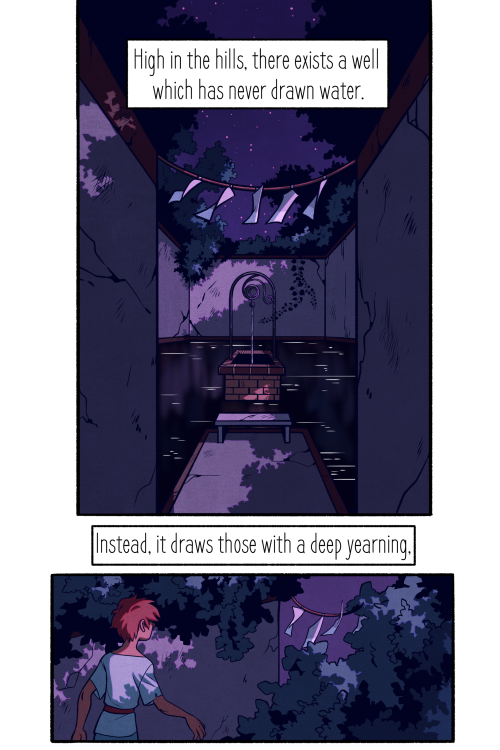
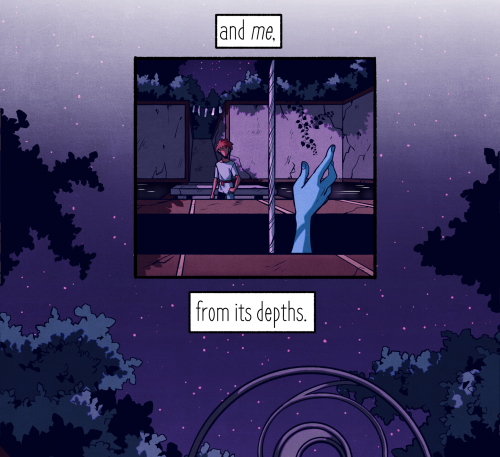
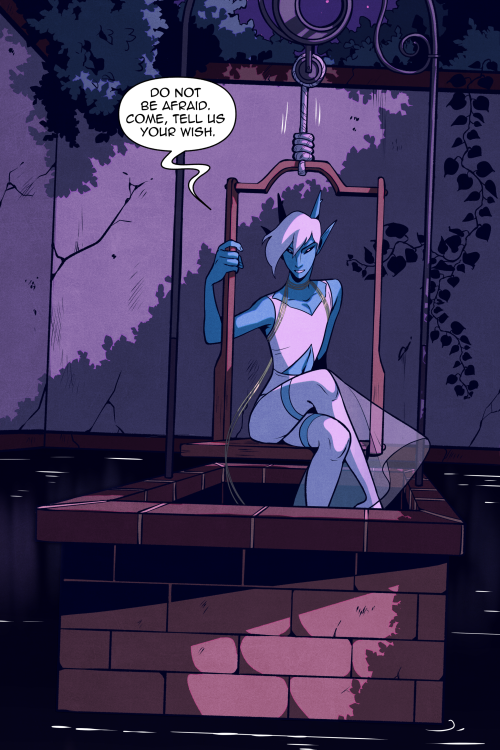
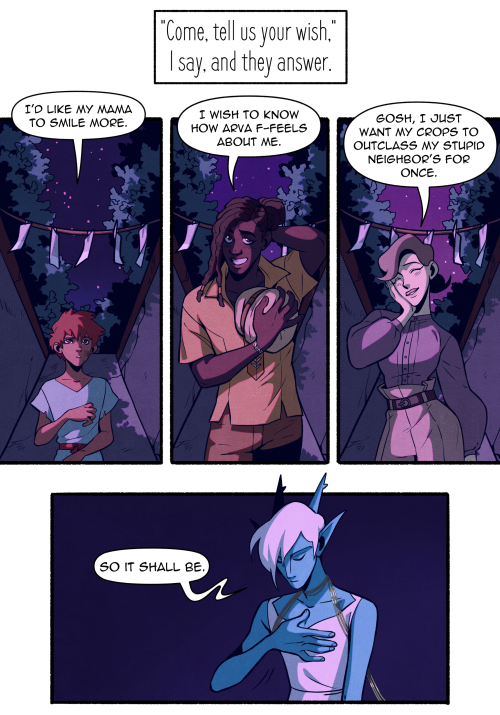

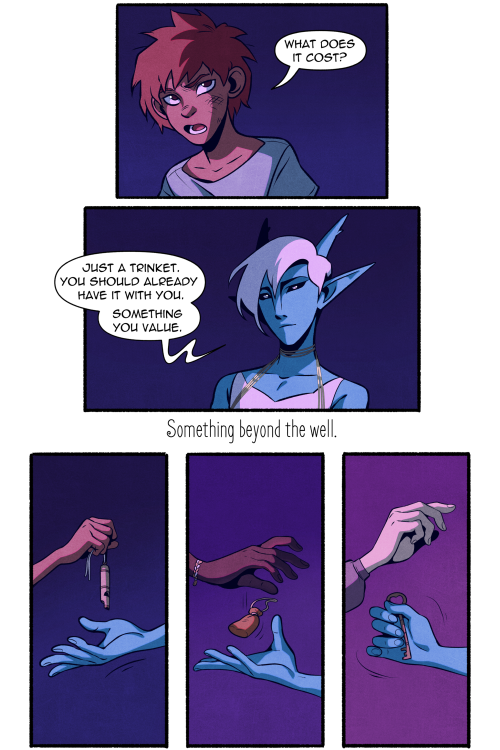

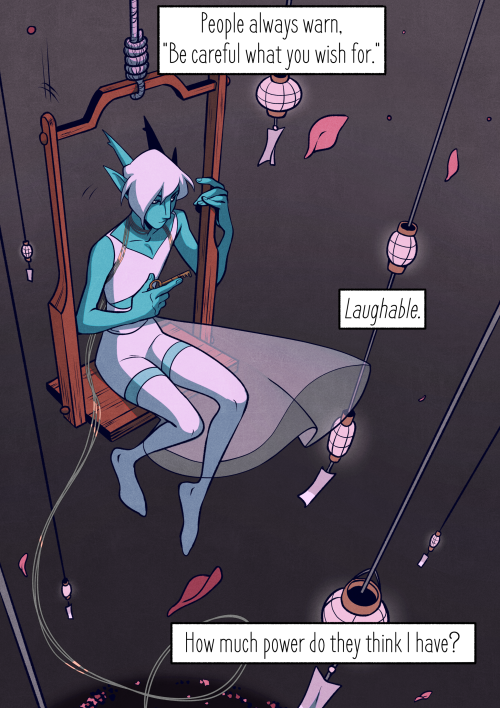

The Touch of Sunlight (read the full story on webtoon here)
this is the first page
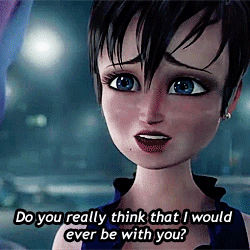



Megamind - ‘Bad Guy’ vs ‘Nice Guy’
I did my thesis on eugenics and forced sterilization in Canadian history (indigenous specific) and the next cis woman to say that men should collectively be forced to get vasectomies for points on some kind imaginary scoreboard of rights is getting sent a copy of the records I had to sift thru of men, mostly indigenous, racialized, developmentally disabled, or poor men, being sterilized against their wills and often without their knowledge.
Zombie setting where the undead are drawn towards unhygienic scents, so survivors constantly bathe to avoid being eaten.
Zombies are docile when adorned with flowers.
Settlements overgrown with herbs and flora.
Barely any banditry; everyone is focused on farming and gathering.
Different human factions and towns named after flowers like Lilies, Orchids, Roses, etc.
Instead of immediately killing an infected survivor, they’re given special funeral rites - the zombie is covered with flowers to keep them calm, and allowed to walk out from the settlement to join the hordes.